类脑感知与计算研究组 NSC Group
Homepage Research Teaching Contact Us
| 2024 | |
|---|---|
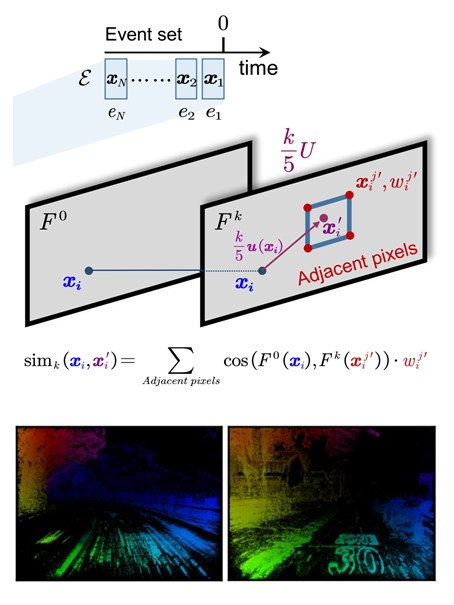 | Hongzhi You*, Yijun Cao, Wei Yuan, Fanjun Wang, Ning Qiao, Yongjie Li Vector-Symbolic Architecture for Event-Based Optical Flow Under review, 2024. ArXiv From a perspective of feature matching, optical flow estimation for event cameras involves identifying event correspondences by comparing feature similarity across accompanying event frames. Here, we introduces an effective and robust high-dimensional (HD) feature descriptor for event frames, utilizing Vector Symbolic Architectures (VSA). The structured symbolic representation of VSA and its characterization of neighboring variable similarity enhance the similarity of feature descriptors for flow-matching points. Based on this HD feature descriptor, we propose a novel feature matching framework for event-based optical flow, encompassing both model-based (VSA-Flow) and self-supervised learning (VSA-SM) methods. |
| 2023 | |
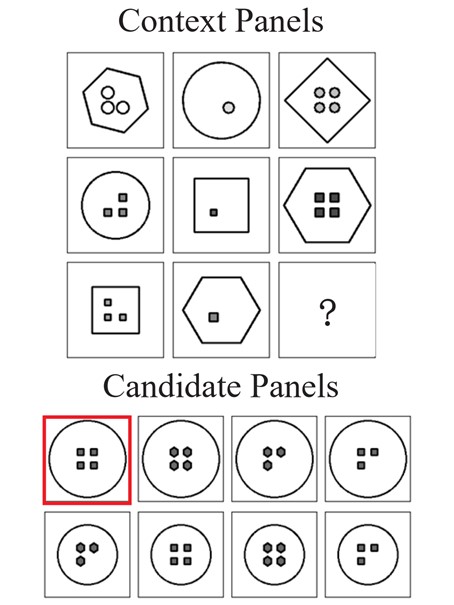 | Zhong-Hua Sun, Ru-Yuan Zhang, Zonglei Zhen, Dahui Wang, Xiaohong Wan, Hongzhi You* A Rule-type-based Neuro-vector-symbolic Architecture for Abstract Visual Reasoning In preparation, 2023. Abstract reasoning in human cognition involves constructing representations that depend more on high-level interpretations of inputs and the rule-based reasoning that is more productive and systematic. Here, we propose a rule-type-based neuro-vector-symbolic architecture (rNVSA) that solves a type of abstract visual reasoning problem - Raven’s Progressive Matrices (RPMs). To achieve systematic rule-type-based reasoning, both frontend and backend adopt unified high-dimensional distributed representations of object attributes that are suitable to the computational property of corresponding rule types, including regular addition, circular addition and logic rules involved in RPMs. The synergy between rule-type-based VSA representations and reasoning endows rNVSA with the ability to reason systematically with computable and interpretable semantics. |
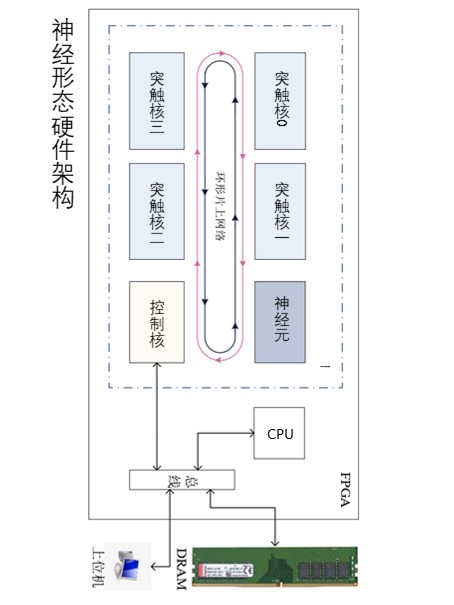 | Yanlin Huang (黄衍林) Research of Cache Architecture for Neuromorphic Hardware 适用于神经形态硬件的缓存架构研究 Master thesis, 2023. Inspired by the continuous firing characteristics of neurons in neuromorphic computing, this paper assumes that continuous spikes can repeatedly trigger the accumulation of the same batch of weights. This characteristic is known as spatiotemporal locality, involves accessing data in a repetitive and batch-wise manner. By leveraging this spatiotemporal locality, a cache architecture can be employed to enhance the reuse rate of on-chip data and improve hardware storage performance. Therefore, this paper transforms the cache in the traditional computer architecture to fit neuromorphic hardware, make it supports event-driven computing mode. |
| 2022 | |
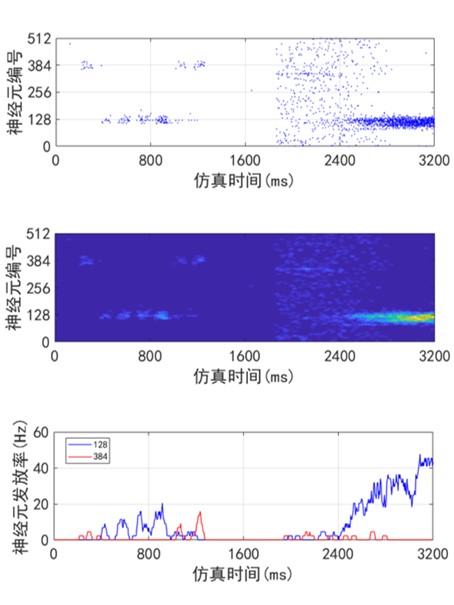 | Kunpeng Zhao (赵琨鹏) Neuromorphic Circuit System Based on Continuous Attractor Neural Network 基于连续吸引子神经网络的神经形态电路系统研究 Master thesis, 2022. Utilizing the CANN model derived from computational neuroscience and employing FPGA as the hardware platform, this thesis presents an expanded and refined CANN circuit system featuring 512 neurons. This system is endowed with the capability to simulate diverse neural mechanisms, including nonlinear synapses with long evolution time constants, short-term synaptic plasticity, and spike frequency adaptation of neurons. Experimental implementations encompass silent working memory and T-maze evidence accumulation tasks on the aforementioned neuromorphic system. Furthermore, a neuromorphic system incorporating multiple CANN cores based on a network on chip is instantiated on FPGA. |
| 2021 | |
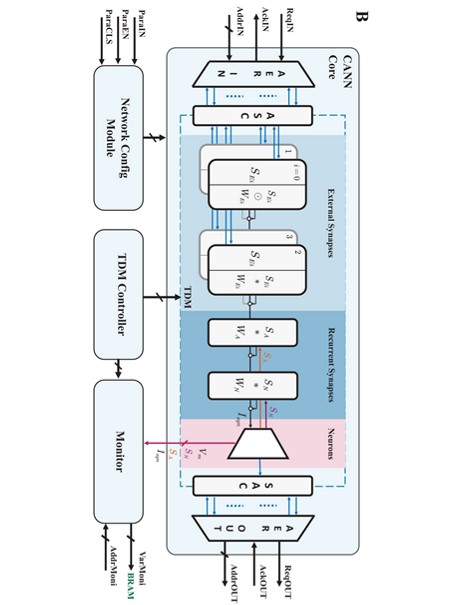 | Hongzhi You*, Zhao Kunpeng Neuromorphic Implementation of a Continuous Attractor Neural Network With Various Synaptic Dynamics IEEE Access, 2021. A continuous attractor neural network (CANN) configured with various synaptic dynamics can implement many brain cognitive functions. Herein, we present a neuromorphic implementation of the CANN of spiking neurons on FPGA, in which the synaptic strength of local excitation and global inhibition can be configured to achieve winner-take-all (WTA) competition. In contrast to previously neuromorphic CANN, in addition to fast-linear synapses, recurrent connections can also be implemented with slow-nonlinear synapses. This endows the proposed CANN on the FPGA with the capability of performing neural computations that require slow and nonlinear temporal dynamics, such as decision making and working memory. |
| 2020 | |
| Hongzhi You, Zhang Mengya, Da-Hui Wang* Neural mechanism underlying risk attitude and probability distortion: One two-stage model of valuation and choice Neurocomputing, 2020. In this study, the Rescorla–Wagner model with learning rates a+/a- upon gain/loss demonstrates that risk attitude is determined by the undervaluation/overvaluation of risky outcome, the standard deviation of the subjective value, and the discrimination ability between subjective value. Our model further displays that overweighting/underweighting of small probabilities results from asymmetric learning rates and the discrimination ability between subjective value. These findings suggest that risk attitude and probability distortion share a common neural mechanism. | |
| 2019 | |
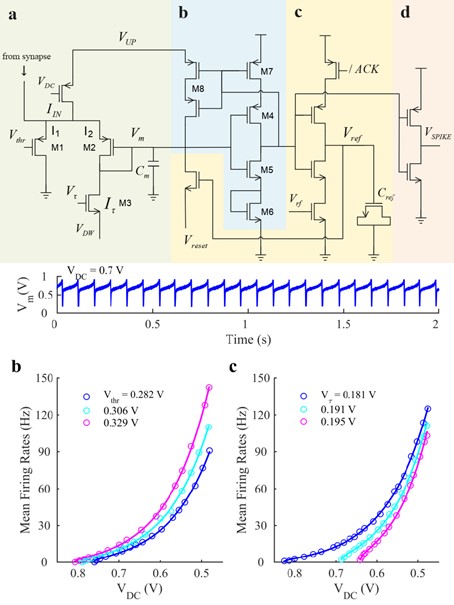 | Hongzhi You* Dynamic Systems Approach to Improve the Design of a Phenomenological Analog Neuron Circuit ISCAS, 2019. A detailed model mapped onto silicon neuron circuit can be beneficial to the improvement of its circuit design. Here we present a dynamic systems approach to obtain a detailed mathematical model describing the dynamics of a biophysically realistic silicon neuron. The approximate analytic solution of its firing rate fits simulation data from our neuron chip fabricated using a 130 nm CMOS process very well. Meanwhile, transistors that contribute critically to variation of firing activities are discovered, which helps the improvement of neuron mismatch. |
| 2017 | |
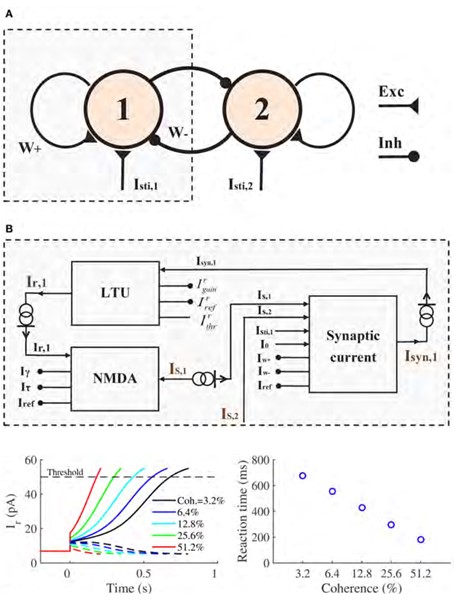 | Hongzhi You*, Dahui Wang Neuromorphic implementation of attractor dynamics in a two-variable winner-take-all circuit with nmdars: A simulation study Frontiers in neuroscience, 2017. Corresponding conference paper in ISCAS 2016 Neural networks configured with winner-take-all (WTA) competition and NMDAR-mediated synaptic dynamics are endowed with various dynamic characteristics of attractors underlying many cognitive functions. This paper presents a novel method for neuromorphic implementation of a two-variable WTA circuit with NMDARs aimed at implementing decision-making, working memory and hysteresis in visual perceptions. |
| 2016 | |
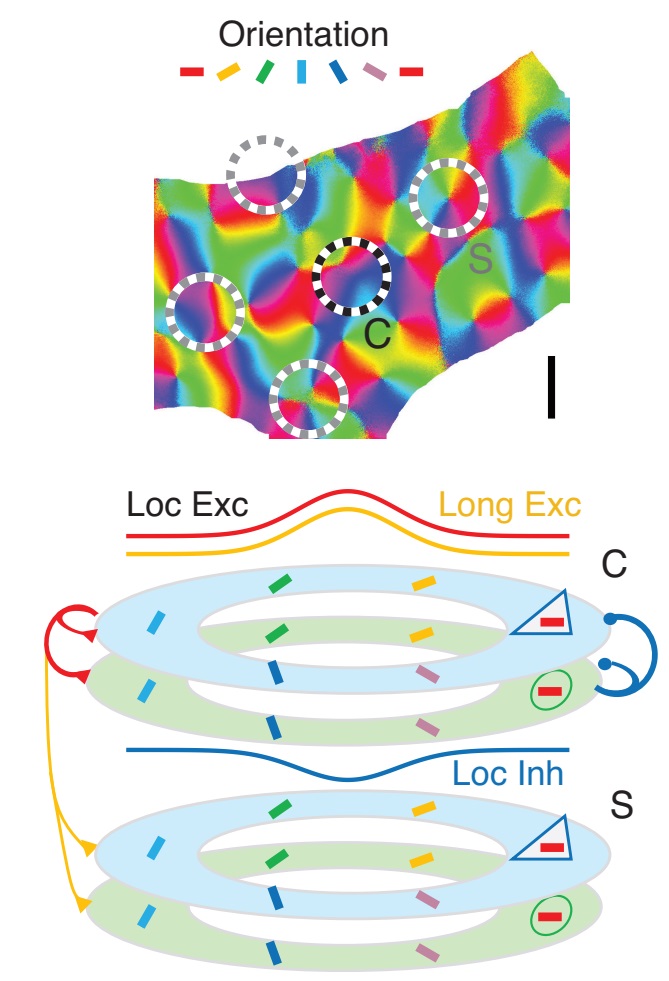 | Hongzhi You, Giacomo Indiveri, Dylan Richard Muir* Surround suppression explained by long-range recruitment of local competition, in a columnar V1 model arXiv, 2016. Poster in ECVP 2018 (European Conference on Visual Perception) Although neurons in columns of visual cortex of adult carnivores and primates share similar orientation tuning preferences, responses of nearby neurons are surprisingly sparse and temporally uncorrelated, especially in response to complex visual scenes. The mechanisms underlying this counter-intuitive combination of response properties are still unknown. Here we present a computational model of columnar visual cortex which explains experimentally observed integration of complex features across the visual field, and which is consistent with anatomical and physiological profiles of cortical excitation and inhibition. |
| 2015 | |
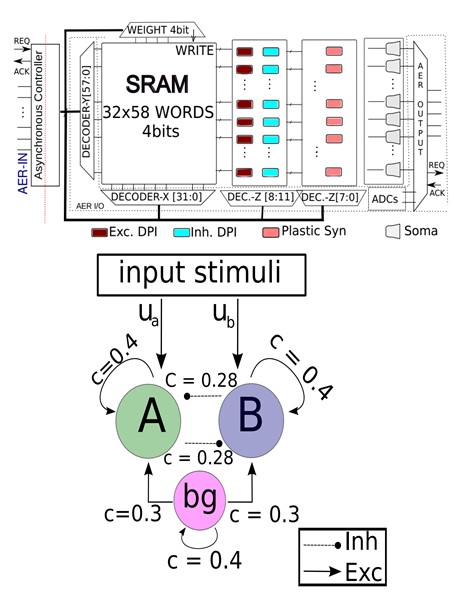 | Corradi, Federico, Hongzhi You, Massimiliano Giulioni, and Giacomo Indiveri Decision making and perceptual bistability in spike-based neuromorphic VLSI systems ISCAS, 2015. |
| 2014 | |
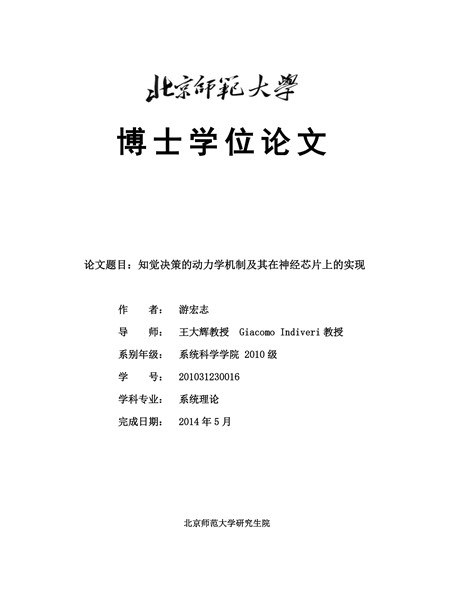 | Hongzhi You (游宏志) Neural Dynamics of Perceptual Decision Making and Its Emulation on Neuromorphic Chip 知觉决策的动力学机制及其在神经芯片上的实现 PhD thesis, 2014. |
| 2013 | |
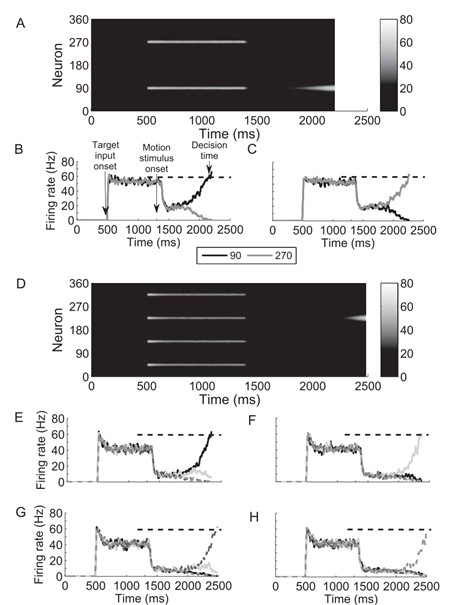 | Hongzhi You, Da-Hui Wang* Dynamics of Multiple-Choice Decision Making Neural Computation, 2013. Neuroscientists have carried out comprehensive experiments to reveal the neural mechanisms underlying the perceptual decision making that pervades daily life. These experiments have illuminated salient features of decision making, including probabilistic choice behavior, the ramping activity of decision-related neurons, and the dependence of decision time and accuracy on the difficulty of the task. Here, we reduced a spiking network model to an analytically tractable, partial integro-differential system and characterized not only multiple-choice decision behaviors but also the time course of neural activities underlying decisions, providing a mechanistic explanation for the observations noted in the experiments. |
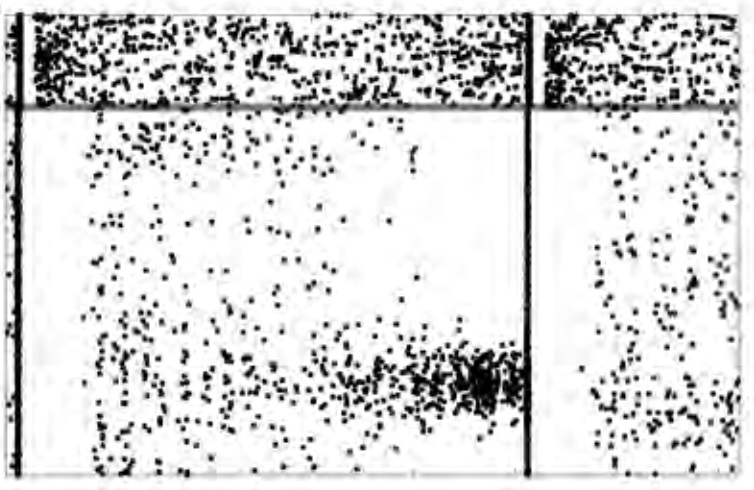 | Standage Dominic, Hongzhi You, Da-Hui Wang, and Michael C. Dorris Trading speed and accuracy by coding time: a coupled-circuit cortical model PLoS Computational Biology, 2013. |
| 2011 | |
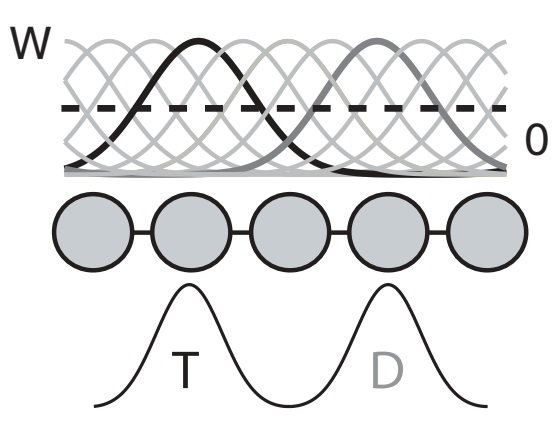 | Standage Dominic, Hongzhi You, Da-Hui Wang, and Michael C. Dorris Gain modulation by an urgency signal controls the speed–accuracy trade-off in a network model of a cortical decision circuit Frontiers in computational neuroscience, 2011. |
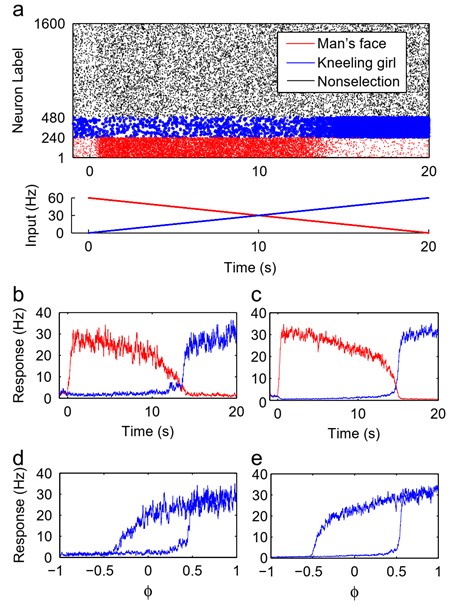 | You, Hongzhi, Yan Meng, Di Huan, Da-Hui Wang The neural dynamics for hysteresis in visual perception Neurocomputing, 2011. The hysteresis in the perception has been observed in many perceptual experiments, but little is known about the underlying dynamical mechanism. We simulate a visual discrimination task, as an example of hysteresis in the perception, using a spiking neuron network and the corresponding slow dynamic system. The hysteresis in visual perception has been reproduced in our simulation. We find that hysteresis is influenced by the change speed of the external stimuli and the excitatory recurrent interaction inside the selective neuron pool. The slow dynamic system reveals the dynamical mechanism underlying the hysteresis. |